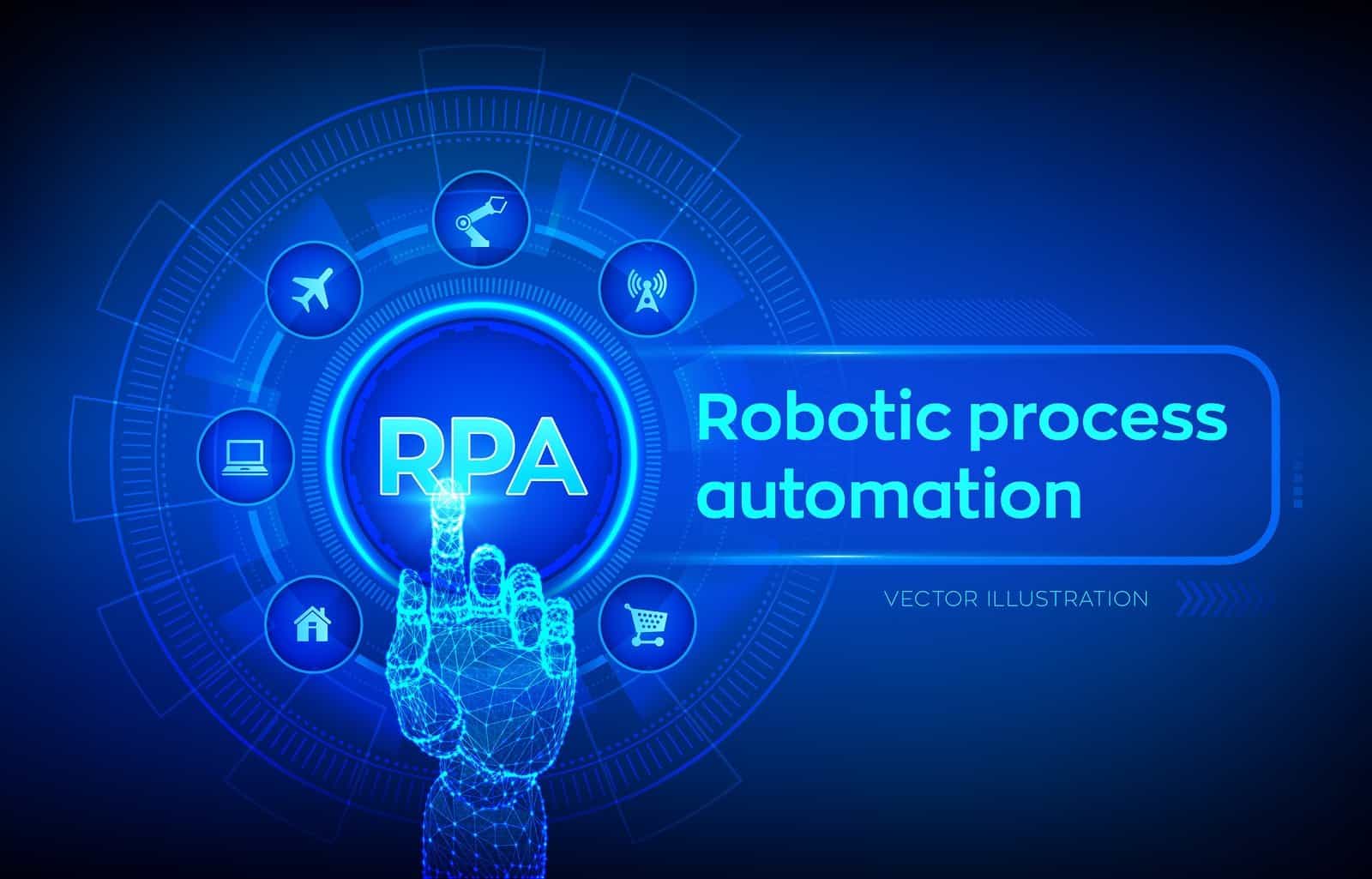Robotic process automation (RPA) is a software technology that makes it easy to build, deploy, and manage software robots that emulate the way humans interact with digital systems and software. Just like people, software robots can do things like understand what’s on a screen, complete the right keystrokes, navigate systems, identify and extract data, and perform a wide range of defined actions and functions. But software robots can do these things faster and more consistently than people can—working continuously and tirelessly to optimize processes, reduce bottlenecks and backlogs, and take on the burden of repetitive workloads so human workers can focus on more strategic and higher-value work.
But it would be a mistake to conceive of RPA solely as an automation tool appropriate for handling rule-based, structured tasks and by-the-book back-office activities. Advances in AI—including machine learning (ML), natural language processing (NLP), and computer vision, among others—have significantly extended the scope of RPA solutions to encompass intelligent document processing (IDP), communications mining, and decision-making workstreams. And now, as agentic automation emerges, RPA technology will expand its role yet again—not only providing AI agents with robotic “arms and legs” for execution, but also providing the critical orchestration, governance, and security required for enterprise-scale agentic operations.
Why is RPA transformative?
For companies around the globe, RPA has changed to way work gets done by taking time-consuming, repetitive tasks off people’s plates. Instead of spending time logging into systems, moving files, or copying and pasting data between tools, software robots can handle those steps—quickly, accurately, and around the clock.
That means teams can spend less time on busy work and more time on the work that really matters: solving problems, collaborating, and improving customer experiences. It also helps businesses reduce costs, move faster, reduce human errors and rework, and stay flexible as needs change. When businesses implement RPA, people have more space to think, create, connect with customers and each other, and make a bigger impact.
RPA also accelerates digital transformation—not only by enabling legacy systems to be incorporated into automated workflows, but also by embedding efficient, fast, and cost-effective automated workflows throughout operations all over an enterprise.
Where can RPA be used?
The short answer: pretty much everywhere. Whether it’s financial services, healthcare, retail, manufacturing, the public sector, or any of dozens more industry sectors, RPA is hard at work streamlining and optimizing processes. Within enterprises, use cases and automation solutions span virtually every department and functional area: finance, legal, procurement, customer services, human resources, operations, QA and testing, IT and beyond.
From its inception, RPA software has been a powerful solution for streamlining and optimizing high-volume, rule-based tasks and workflows—which are found everywhere within the enterprise environment. Its expansion into AI-enabled intelligent automation has allowed RPA to extend its impact into intelligent document processing (IDP), communications mining, and beyond.
For example, software robots can now process and extract unstructured data from complex, unstructured documents, like invoices with unpredictable layouts, and exceedingly complex contracts, medical records, and insurance claims. RPA robots can parse emails and chats to understand a sender’s intent and trigger responsive workflows. They can apply machine learning models to take the initiative in making real-time fraud or credit risk decisions. And they can learn and continuously improve their accuracy in performing these activities.
What should you look for in RPA technology?
If you’re serious about scaling automation across your organization, you need more than an RPA tool that automates one or two tasks. You need an end-to-end platform that can support you from start to finish—helping you find the right opportunities, build and test automations quickly, and manage everything as it grows.
The right RPA technology should make it easy to automate tasks across teams and departments, keep workflows running smoothly, and give you the visibility and control to manage it all at scale. And as we enter an agentic era where AI agents, robots, and people must work together, it needs to offer robust orchestration, governance, and security. Whether you’re just getting started or expanding a mature program, having that kind of foundation makes all the difference.
How do RPA and AI work together?
Robotic process automation and artificial intelligence aren’t the same—but together, they open up entirely new possibilities for automating work. RPA technology handles structured, rules-based tasks with speed and precision. Advanced AI skills in the form of machine learning models, natural language processing (NLP), character and image recognition, and more, adds the ability to understand language, interpret unstructured data, and make decisions in more dynamic scenarios.
AI is also making it possible to scientifically discover a complete range of automation opportunities and build a robust automation pipeline through RPA applications like process mining.
And at a time when companies need to accelerate their integration of AI into front-line activities and decisions, many are finding that RPA can serve as AI’s ‘last-mile’ delivery system. Robots can be configured to apply machine learning models to automated decision-making processes and analyses, bringing machine intelligence deep into day-to-day operations.

